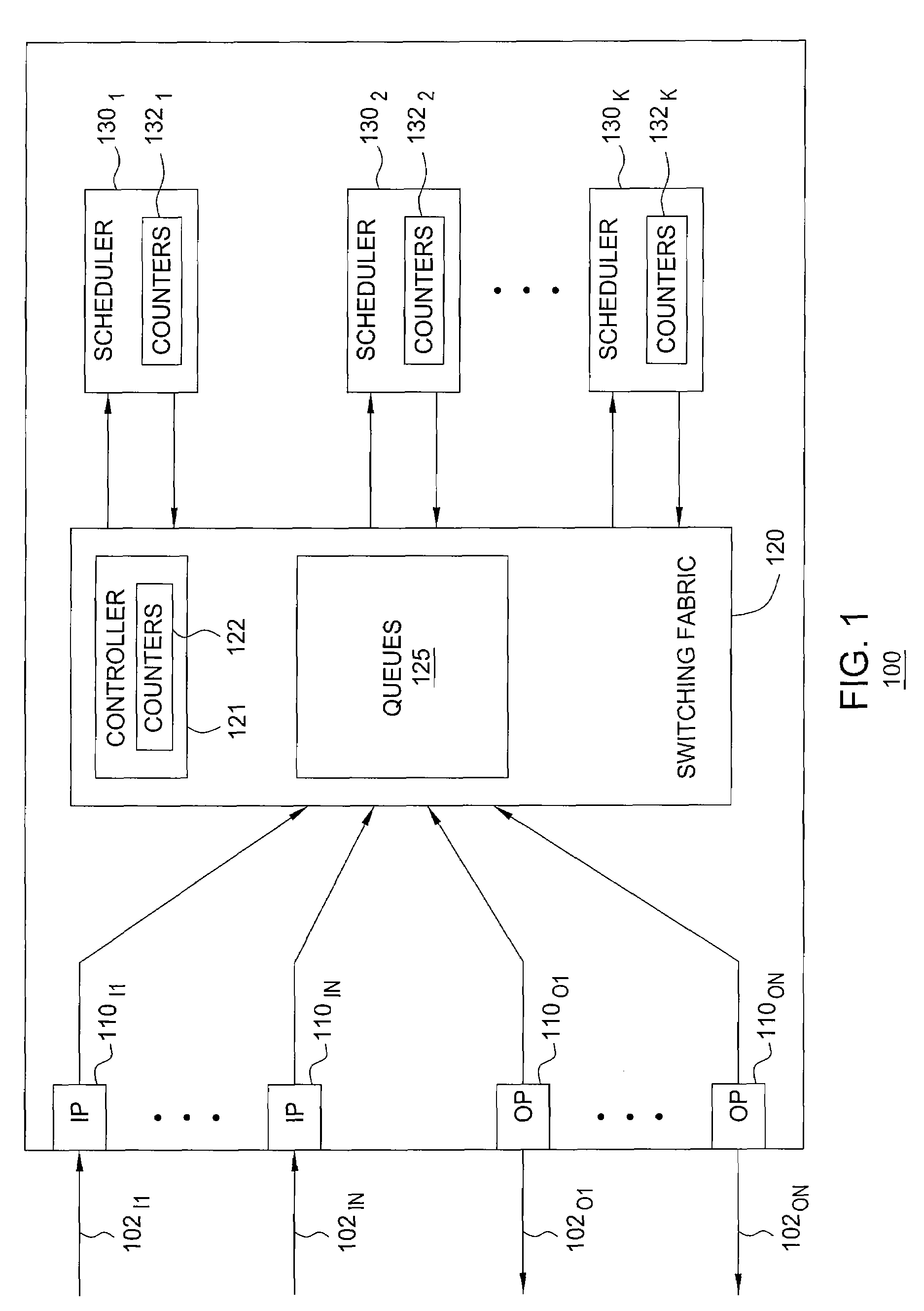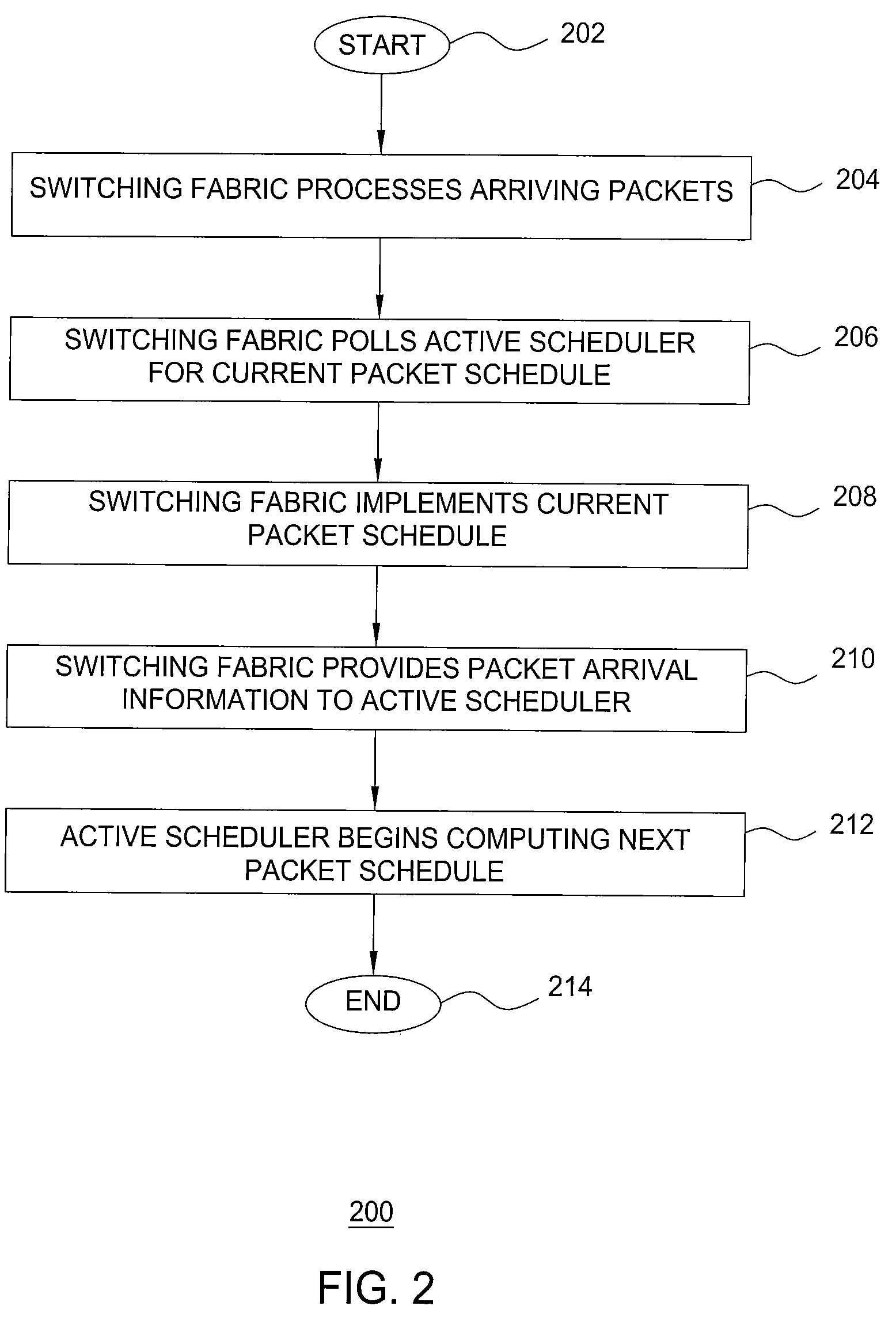Method and apparatus for operating fast switches using slow schedulers
a scheduler and fast technology, applied in the field of communication networks, can solve problems such as network bottlenecks, inability to schedule input-queued switches, and inability to meet the needs of users,
- Summary
- Abstract
- Description
- Claims
- Application Information
AI Technical Summary
Benefits of technology
Problems solved by technology
Method used
Image
Examples
Embodiment Construction
[0015]The present invention provides fast switching using a switching fabric and a plurality of schedulers. The schedulers become active in a round-robin manner such that only one of the schedulers is active during any given timeslot. The scheduler active during a given timeslot provides a packet schedule to the switching fabric during that given timeslot. The switching fabric switches packets through the switching fabric during the given timeslot according to the packet schedule received during the given timeslot. A scheduler determines a packet schedule using packet arrival information and packet departure information for packets arriving to and departing from the switch only during timeslots in which that scheduler is the active scheduler (i.e., packets arriving and departing during every kth timeslot where the switch includes k schedulers).
[0016]FIG. 1 depicts a high-level block diagram of a switch. Specifically, switch 100 includes a plurality of input ports (IPs) 110I1-110IN (...
PUM
 Login to View More
Login to View More Abstract
Description
Claims
Application Information
 Login to View More
Login to View More - R&D
- Intellectual Property
- Life Sciences
- Materials
- Tech Scout
- Unparalleled Data Quality
- Higher Quality Content
- 60% Fewer Hallucinations
Browse by: Latest US Patents, China's latest patents, Technical Efficacy Thesaurus, Application Domain, Technology Topic, Popular Technical Reports.
© 2025 PatSnap. All rights reserved.Legal|Privacy policy|Modern Slavery Act Transparency Statement|Sitemap|About US| Contact US: help@patsnap.com



